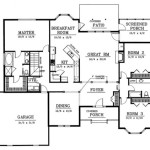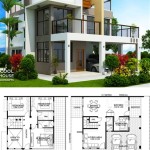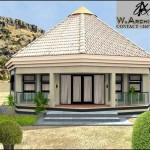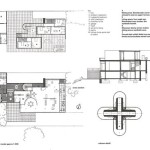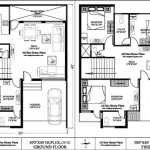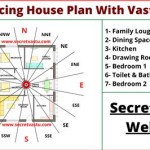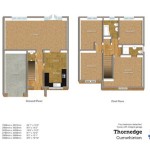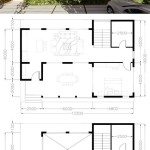Small Carriage House Garage Plans: A Guide to Design and Functionality
Carriage houses, once solely utilitarian structures for horse-drawn carriages, have evolved into versatile additions to modern properties. Small carriage house garage plans offer homeowners the opportunity to expand their living space while maintaining the aesthetic charm of these historic structures. This article explores the key considerations involved in planning and designing a small carriage house garage.
One of the primary appeals of a carriage house is its adaptability. The ground floor can be dedicated to garage space, accommodating one or two vehicles, while the upper level can serve a variety of purposes. Popular options include guest suites, home offices, studios, or even rental units, providing additional income potential.
Size is a crucial factor in carriage house design. Smaller plans are often more cost-effective to build and require less land. They are well-suited for properties with limited space or for homeowners seeking a compact, multifunctional structure. Careful planning is essential to maximize functionality within a smaller footprint. This includes considering the placement of stairs, the layout of the upper level, and the efficient use of available space.
Architectural style plays a significant role in the overall aesthetic of a carriage house. Traditional designs often incorporate features like gabled roofs, dormers, and cupola windows, echoing the historical charm of these structures. Modern interpretations may feature cleaner lines, larger windows, and alternative materials, creating a contemporary feel while retaining the basic carriage house form.
Choosing the right materials is vital for both aesthetics and durability. Exterior siding options range from classic wood siding, which requires regular maintenance, to more durable and low-maintenance materials like fiber cement or vinyl siding. Roofing materials, such as asphalt shingles, metal roofing, or cedar shakes, should be selected based on the desired aesthetic, budget, and local climate conditions. Proper insulation is crucial for energy efficiency, particularly if the upper level is intended for habitable space.
Local building codes and zoning regulations significantly influence the design and construction process. Regulations may dictate the maximum height and size of the structure, setback requirements from property lines, and parking regulations. Obtaining the necessary permits and approvals is essential before commencing any construction.
Garage door selection impacts both the functionality and appearance of the carriage house. Traditional carriage-style doors, often made of wood, add to the historical authenticity of the structure. Modern overhead doors offer convenience and can be customized to complement the overall design. Consider the size and number of vehicles to be accommodated when selecting the appropriate garage door style and size.
The interior layout of the upper level should be carefully planned to maximize functionality and comfort. If the space is intended as a living area, incorporating a kitchen, bathroom, and sleeping area requires careful consideration of plumbing and electrical systems. For a home office or studio, adequate lighting, ventilation, and storage solutions are essential.
Landscaping plays a vital role in integrating the carriage house into the existing property. Consider planting trees, shrubs, and flowers to create a visually appealing transition between the main house and the carriage house. Walkways, patios, and outdoor lighting can further enhance the functionality and aesthetic appeal of the surrounding area.
Accessibility is an important consideration, particularly if the upper level is intended for guests or tenants. Incorporating features like ramps, wider doorways, and elevators can ensure accessibility for individuals with mobility challenges. Consulting with an architect or accessibility specialist can provide valuable guidance in designing an inclusive space.
Budgeting is a crucial aspect of any construction project. The cost of building a small carriage house can vary significantly depending on the size, materials, finishes, and labor costs in the specific location. Developing a realistic budget and securing financing are essential steps before beginning the project.
Working with experienced professionals is essential for a successful carriage house project. Architects can provide design expertise, ensuring that the structure meets both aesthetic and functional requirements. Contractors manage the construction process, ensuring that the project is completed on time and within budget. Consulting with professionals ensures a smooth and efficient building process.
Regular maintenance is vital for preserving the longevity and value of a carriage house. This includes regular inspections of the roof, siding, and foundation, as well as routine maintenance of the garage door mechanism and other mechanical systems. Addressing any issues promptly can prevent more significant and costly repairs in the future.
Small carriage house garage plans offer a versatile and attractive solution for expanding living space and adding value to a property. Careful planning, thoughtful design, and collaboration with experienced professionals are essential for a successful carriage house project.

Modern Carriage House Plan Millard Heights Plans Garage

Plan 051g 0020 The House

Plan 14653rk Carriage House With Man Cave Potential Garage Guest Plans

Carriage House Plans Plan With 3 Car Garage 034g 0012 At Www Thehouseplan Com

Carriage House Plans Craftsman Plan Design 035g 0003 At Www Thehouseplan Com

Modern Carriage House Plan Timber Valley Plans Architecture Design

Plan 019g 0011 The House

Carriage House Plans 2 Car Garage Apartment Plan Design 027g 0005 At Thehouseplan Com

Plan 85372 Popular Garage Carriage House With Living Space

Plan 007g 0002 The House

